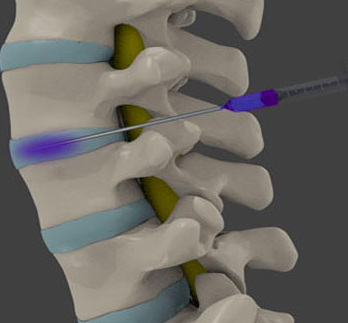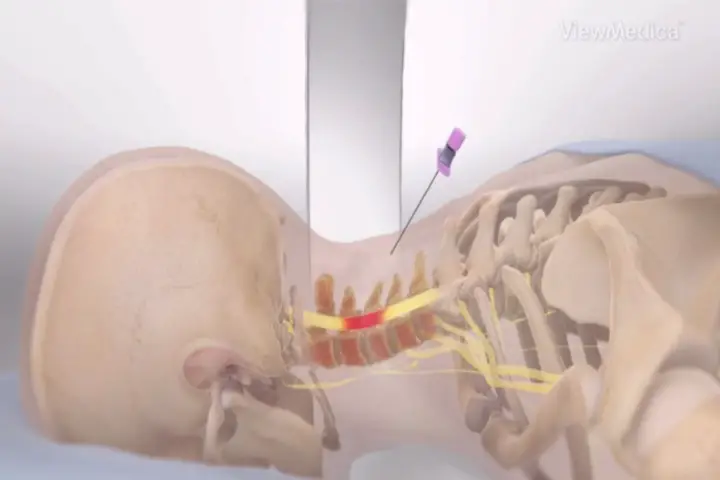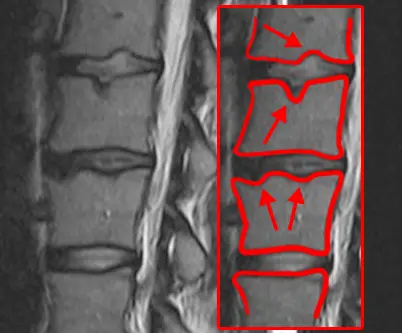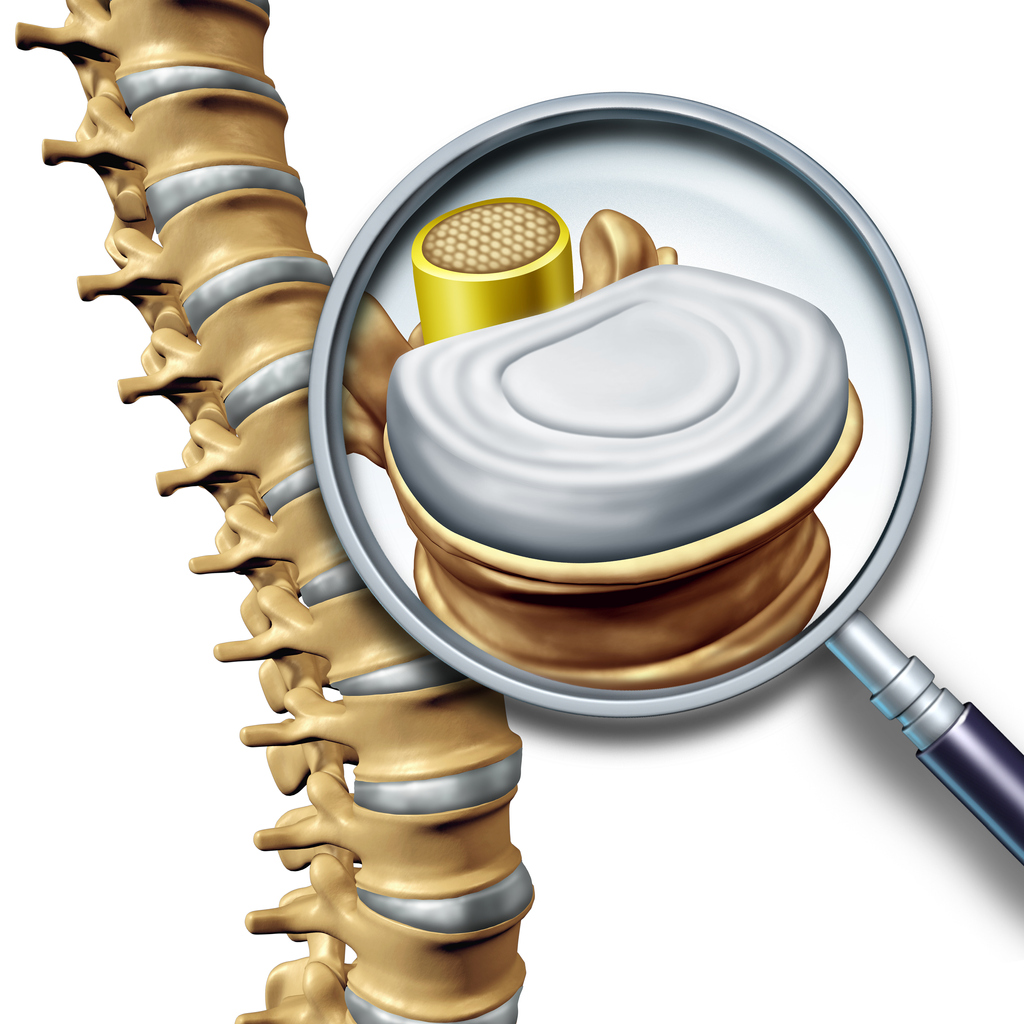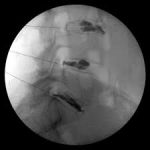Pain related to pathologies of the lumbar spine can sometimes be very debilitating, especially when conventional drug treatments no longer work.
THEscan-guided lumbar infiltration ou underscan infiltration currently represents an alternative increasingly proposed to relieve these ailments.
What does a lumbar infiltration under scanner consist of? In which cases should it be used? What are the benefits, risks and cost of this procedure? Answers in this article.
Anatomical reminder on the lumbar spine
La lumbar spine represents the lower part of the spine which follows the dorsal spine and articulates with the sacrum.
It consists of five vertebrae connected by intervertebral discs made up of two parts, the central one called " pulpy nucleus » and the other, peripheral, surrounding the latter, called « fibrous ring ».
Le Lumbar spine also presents a spinal canal containing the nerve structures, notably, the lower part of the spinal cord which ends at the vertebrate L2 to follow nerve roots exiting through orifices called " foramina ».
The nerve roots succeeding the spinal cord form a structure called " ponytail whose role is the sensory-motor innervation of the lower limbs and the perineum.
Finally, the vertebral column presents physiological curvatures of the type of lordosis et kyphosis. The curvature of the lumbar spine is called " lumbar lordosis ».
Lumbar spine pathologies
The lumbar spine is characterized by significant mobility, exposing it to the risk of degenerative lesions, it can also be the site of tumoral and traumatic lesions.
The main conditions affecting the lumbar spine are represented by:
- The herniated discs causing sciatica and cruralgia;
- THElumbar arthritis ;
- Lumbar discopathies;
- Lumbar scoliosis;
- Le spondylolisthesis, retrolisthesis ;
- The lumbar stenosis ou narrow lumbar canal ;
- Primary or secondary tumors (metastases)
- Vertebral fractures and compressions.
Lumbar infiltration under scanner
THElumbar infiltration scan-guided involves the injection of a steroidal anti-inflammatory drug (cortisone) under radiological control (scanner) at the level of the lumbar spine in order to reduce or even eliminate the inflammatory reactions that cause pain.
This infiltration can take place in different places, which makes it possible to distinguish:
- Epidural infiltrations: when the drug is injected into the epidural spaces.
- Periradicular infiltrations: also called foraminal infiltrations. In this case, the infiltration takes place at the origin of the painful nerve root, that is, through the foramina.
In which cases is lumbar infiltration indicated?
As a general rule, the action to be taken in the face of most diseases of the spine in general or of the lumbar spine in particular is based, first of all, on the prescription of analgesic drugs.
However, this therapeutic component is not always effective and does not completely cure this type of pathology, hence the systematic use of other therapeutic approaches such as local infiltration of corticosteroids.
Llumbar infiltration is indicated secondarily when the pain of lumbar origin persists for more than seven weeks and does not respond to rest and drug treatment.
It can also be proposed as first intention, in the case sciatica ou cruralgia secondary to a herniated disc or to a spinal stenosis say " hyperalgesic ».
Scan-guided infiltration and infiltration without radiological guide: what is the difference? (Benefits)
Image-guided injections provide multiple benefits. Indeed, imaging improves the precision of the infiltrations while reducing the pain felt during its realization.
Radiological guidance during infiltrations also allows more secure injections by ensuring that sensitive elements such as nerves or vessels are not damaged.
What about the procedure?
The lumbar infiltration under scanner is a painless gesture which is carried out within the framework ambulatory (without hospitalization) and which lasts on average 15 to 20 minutes.
During the examination, the patient is in the position of prone position on a scanner table.
Initially, a location of the injection site is carried out thanks to the realization of a first scanner. This area is then rigorously disinfected to ensure total asepsis of the gesture.
Then, after the realization of a local anesthesia, an iodinated contrast product is first injected in order to ensure the good diffusion of the drug then the injection of the latter is carried out using a very fine needle. .
The patient's full cooperation is required during this procedure. Indeed, it is necessary to stand still and follow the doctor's recommendations in order to ensure an effective and uncomplicated procedure.
Risks and contraindications of lumbar infiltration (side effects)
As with any medical procedure, there are certain contraindications to performing a lumbar infiltration under scanner, in particular, infections pre-existing at the injection site, blood clotting disorders, a surgical history of a herniated lumbar disc, a drug allergy (iodinated contrast agent ou corticosteroids) and finally pregnancy.
Remaining an invasive gesture, scanno-guided lumbar infiltration presents some side effects, fortunately rare when the rules of realization are respected.
The main side effects identified are infections, bleeding and allergic reactions related to iodinated contrast products or corticosteroids (cortisone).
Some patients may experience mild vagal discomfort.
Finally, exceptionally and in extremely rare cases, paralysis can occur.
Convalescence
After an infiltration, an accentuation of the pain can be felt by the patient. For this, taking an analgesic and anti-inflammatory treatment is recommended during the 48 hours following the procedure. The onset of transient paresthesias may also occur within 24 to 48 hours.
It is recommended to the patient a total rest during the 48 hours following the intervention. Efforts and heavy loads are not recommended during the first week.
How long does it last ? (efficiency)
The analgesic effect of an infiltration begins to appear on average between the troisième and fifth day following the gesture.
The average effective duration of an infiltration isone to two months.
A limit of three infiltrations per year and per site is generally recommended.
What is the average cost of a lumbar infiltration?
The average cost of an infiltration under scanner is estimated at $160, including medical expenses and the price of the infiltration itself.
Alternative treatments
As mentioned previously, there are situations that contraindicate the use of lumbar infiltration under CT. In such situations, the use of alternative treatments becomes necessary.
Conventional or conservative treatment; indicated in first intention, remains a treatment of choice to relieve lumbar pain.
Takinganti-inflammatory analgesics where corticosteroids orally associated with sessions of physiotherapy allows in the majority of the cases to relieve the pains and to bring clear improvements.
In the event of failure of any treatment and in the absence of a response to the infiltration, recourse to a surgical intervention may sometimes be necessary.
My name is Sidali. I am a general practitioner and Web Editor. As a healthcare professional, my mission is to contribute to the relief of my patients' ailments. Being also passionate about writing, I have the pleasure of sharing my solid medical knowledge with the greatest number of readers, by writing popular articles that are very pleasant to read.

